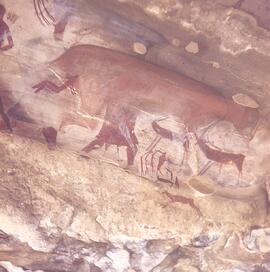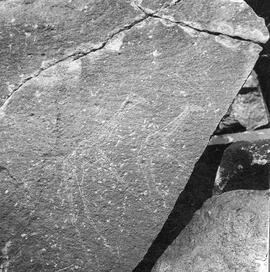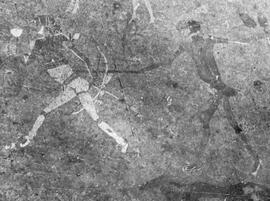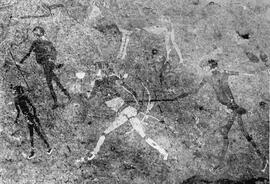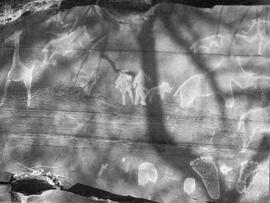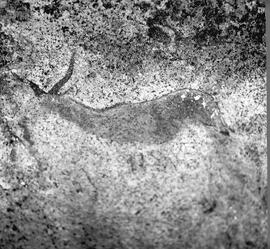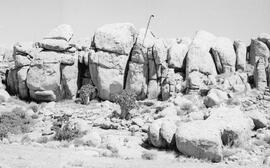Identity area
Reference code
Title
Date(s)
Level of description
Extent and medium
Context area
Name of creator
Biographical history
Name of creator
Biographical history
Background of the Recorder
The Rock Art Research Institute had its small beginnings in 1979 when Professor David Lewis-Williams moved from the Social Anthropology Department at the University of the Witwatersrand to the Archaeology Department. A few years later, in 1983, he started a research project focused on surveying and recording the rock art of the Harrismith district, South Africa. This project was headed by Professor Lewis-Williams, with Bruce Fordyce as the only other researcher, and was funded by the Human Sciences Research Council (HSRC). This project grew and the necessity for interpretation of the rock art, not just finding the rock art sites, became a primary focus. In 1986 the entity became more widely recognized and, through a series of successful projects, achieved Unit status becoming the Rock Art Research Unit (RARU), with Professor Lewis-Williams as the director of the Unit. The HSRC still funded the Unit, and additional funding came from the Centre for Science Development, as well as from Wits University. Some of the people employed (full or part time, or as research students) by RARU are Terence Kohler (1984), Conrad Steenkamp (1984), Paul den Hoed (1984-1985), Zachary Kingdon (1986-1987), Colin Campbell (1987-1988), Thomas Dowson (1988-1994), Anne Holliday (1989-1995), Geoff Blundell (from 1993), Sven Ouzman (from 1993). In 2000, with the Professor Lewis-Williams's imminent retirement, Professor Barry Mendelow, then the Deputy Vice Chancellor, suggested that the Unit be ungraded to an institute. A unit is closed if the director leaves, but an institute can continue under different directorship. Institute status is the highest research status conferred by Wits University, and it was awarded to the Unit to recognise the high level of achievement in research publications and the breadth of research talent built up during Professor Lewis-Williams's twenty-one year directorship. Today the Rock Art Research Institute (RARI) is funded by the National Research Foundation, Wits University's own Research Fund and the Anglo-American Chairman's Fund. Some activities have been and are privately resourced. Dr Benjamin Smith became the new director of the Institute after Professor Lewis-Williams. He is still the director today. RARI is dedicated to developing an understanding of rock art by researching indigenous beliefs, rituals, customs and lifeways. Research is currently underway in all South African provinces as well as in Zimbabwe, Swaziland, Lesotho, Botswana, Mozambique, Zambia, Malawi, Tanzania and Kenya. Research therefore includes the rock arts of San and Pygmy hunter-gatherers, Khoi and Nilotic pastoralists, as well as of African farmers, such as the Chewa and the Northern Sotho. Underpinning this diverse research is a focus on the complex symbolism of African image-making. RARI has become one of the largest specialist rock art institutions in the world, attracting students and researchers from around the world. It is a leading centre for rock art training and offers undergraduate and post-graduate courses in rock art recording, interpretation and management. It is also active in rock art conservation and in the development and management of rock art tourism in South Africa. Included in these initiatives is the establishment of the Origins Centre in 2006 (www.origins.org.za), a world-class museum facility located in Johannesburg on the Wits University campus.
Repository
Archival history
Immediate source of acquisition or transfer
Content and structure area
Scope and content
Appraisal, destruction and scheduling
Accruals
System of arrangement
Conditions of access and use area
Conditions governing access
Conditions governing reproduction
Language of material
- English
Script of material
- Latin
Language and script notes
Physical characteristics and technical requirements
Finding aids
Allied materials area
Existence and location of originals
Existence and location of copies
Related units of description
Notes area
Note
While horse riding in the Cathkin area, Willcox had become fascinated by the Bushman paintings in the caves, and this was the beginning of a long journey of rock art recording for him.
After 1946, Alex Willcox used his saving from his profession to carry on with his long passion for rock art recording. Mr Willcox and his wife Nancy, travelled through South Africa, burdened with packs loaded with heavy photographic equipment and with food and camping gear. He was to become the first Bushman art explorer and archaeologist to realize the potential value of colour photography in reproducing, exactly as Bushmen saw them, the record of their emotions in rock art. His continuous rock art recording culminated in the publications of several rock art books; mainly the Rock Paintings of the Drakensberg in 1956; The rock art of South Africa in 1963; in 1971 Wits university published his reports on the excavation of two shelters in the Drakensberg in which he had the collaboration of Bill Hepner and in 1984 the Drakensberg Bushman and their art.
In all of Alex's publications he always acknowledges his wife Nancy. In one of the acknowledgements he said:
' My wife who accompanied me on most of the trips, who has carried her rack suck countless miles of heavy going, who as acted as assistant photographer and typist, and who did not object even to spending part of her honeymoon in Bushman shelters, I cannot adequately thank, but I daresay she has enjoyed it all no less than I.'
Alex was recognized by his peers, he enjoyed the membership of the Royal Society of South Africa. He was the president of the South African Archaeological Society in 1972-3; he was awarded a certificate of Merit by the South Africa Association for the Advancement of Science and was the founder member of the Southern African Rock Art Research Association.
Alex Willcox died tragically on Wednesday 1 September 1993 at Gray's Hospital in Pietermaritzburg after being shot through the window of his home in the Drakensberg.

